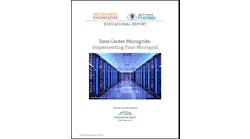Kaiser Permanente plans to demonstrate a range of energy innovations at a hospital microgrid in Ontario, California, that will include how to incorporate renewable energy and move away from diesel generators.
The hospital microgrid also will feature a fuel cell and a demonstration virtual power plant (VPP) — with power provided from microgrids located in up to three different utility territories.
The Ontario project follows a similar endeavor at a Kaiser Permanente hospital in Richmond, California, from developer Charge Bliss, according to David Bliss, a surgeon and CEO of Charge Bliss, which aims to bring renewable energy and resilience to hospitals, especially those in disadvantaged communities.
The project, which includes 2.2 MW of solar, a 1 MW fuel cell from Bloom Energy and a 9 MWh battery, is funded in part by an $8 million grant from the California Energy Commission (CEC), which seeks to demonstrate some of the innovation the project is expected to achieve. The controls will be supplied by Charge Bliss.
Demonstrating the advantages of hospital microgrids was the aim of the Richmond project, which also received some CEC funding. It was the first microgrid to connect renewable energy to a hospital’s existing diesel backup power system, he said.
Islanding without diesel
An important aim of both projects is to eliminate the use of diesel fuel backup in hospitals.
“It became clear to me that diesel, while reliable as a backup source, has a history that makes it unsustainable for environmental equity and air quality. A lot of these hospitals are in disadvantaged communities, and operating diesel has significant health and environmental impacts,” said Bliss. Part of his company’s charter is to service communities of need.
This is the first hospital that will be capable of islanding without diesel, he said.
The Ontario project is 10 times the capacity of the Richmond microgrid, can operate 10 hours or more in island mode, has a more diverse array of assets and will be connected to a critical branch of power, said Bliss.
“Instead of just one of the lesser power branches, this supports the absolutely essential functions,” he said. Those include emergency room operations, ventilators, imaging and operating room equipment.
The Richmond microgrid is connected to the life safety branch, supporting items important during an emergency for safety but not essential to patient care and survival, said Bliss, who has been involved in hospital design for many years. He’s vice chair of California’s Office of Statewide Health Planning and Development.
As part of its grant, the CEC called for Charge Bliss to use a non-lithium battery to explore different battery chemistries. Included in the microgrid is a zinc-based Znyth battery from Eos Energy.
“It turns out that Eos is the most cost-effective battery solution, including all the lithium batteries,” said Bliss. Maintenance costs are low, and the rate of degradation is small so the battery can be used for 20 years. In addition, the Eos battery doesn’t pose some of the thermal runaway risks associated with lithium batteries.
“It’s not only cost-effective, but there’s potentially an important added safety margin here, which is not trivial in a healthcare environment,” said Bliss.
Another precedent expected to be established by the project is the use of the fuel cell.
Using the fuel cell, solar and battery is a step forward because few deployments use all three together. “This gives us three resources to work with. We have intermittent but renewable solar, a battery to store it and continuous production from the fuel cell at any one time. We have an adjustable amount of power to store or deliver, which gives us more flexibility to modulate power,” he said.
The microgrid will allow the hospital to decrease its draw from the utility and also decrease peak loads.
It also opens the door for the hospital to provide grid services, possibly offering demand response or exporting power and contributing to the power quality of the grid.
Multiple virtual power plants
Charge Bliss also plans to test a virtual power plant that would include power from microgrids located in up to three different utility territories, said Bliss. The power would come from the Ontario microgrid in Southern California Edison territory, the Richmond microgrid in Pacific Gas & Electric territory, and possibly from San Diego Gas & Electric territory, where the University of San Diego may add a distributed energy resources (DER) testing facility.
“We’re going to test them as two or three nodes of a VPP. We could test the California Independent System Operator communications, and test communication with individual utilities, and explore what we’re capable of,” said Bliss.
He said he believed his company would be the first to test and execute the concept of a virtual power plant in two or three different territories.
“We will work with utility programs. Utilities know they need to make use of DERs,” said Bliss. They need to be able to coordinate resources that are located in separate locations.
“Taking power from different locations is critical to maintaining the stability of the overall grid,” he explained.
The idea, for now, is to test the concept. Ultimately, a virtual power plant with power coming from different locations — say, 500 instead of three — would provide flexibility for utilities and income for microgrid owners.
Sustainability + healthcare = hospital microgrid
Bliss first got involved in clean energy about a decade ago when his company started building charging infrastructure for electric vehicles. The company also builds DERs for commercial clients. More recently, he got involved in microgrids for hospitals.
“My interests in sustainability and healthcare have been merged together,” he said.
Track news about hospital microgrid projects. Subscribe to the free Microgrid Knowledge Newsletter.








